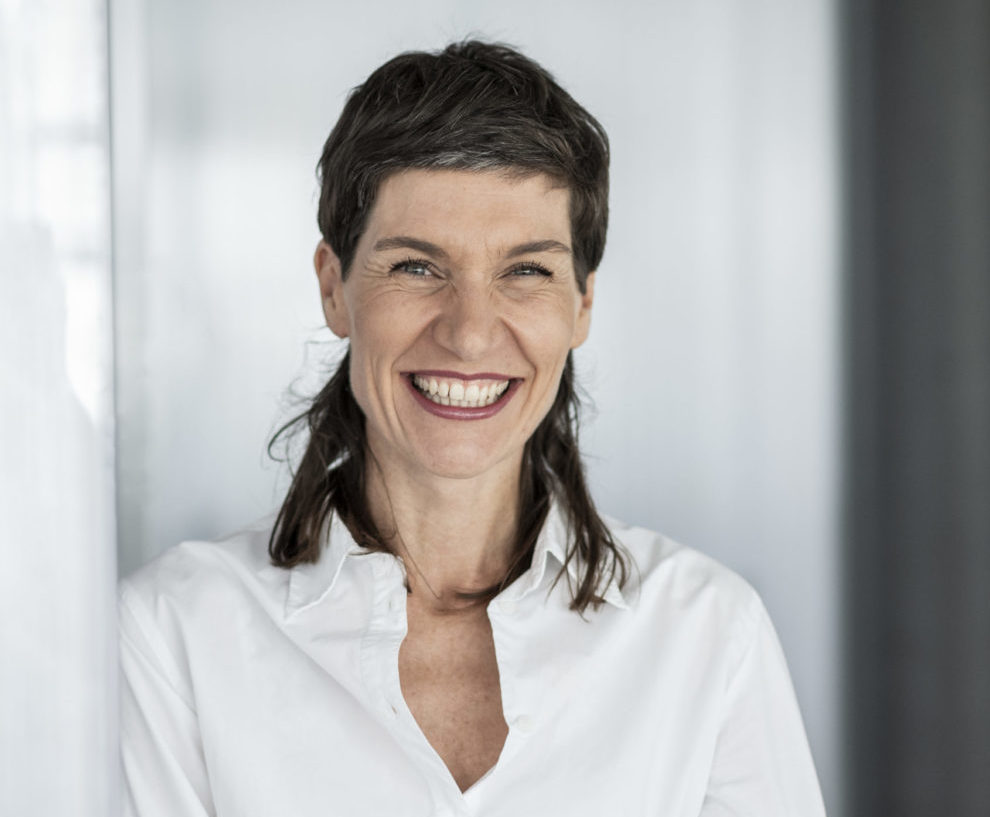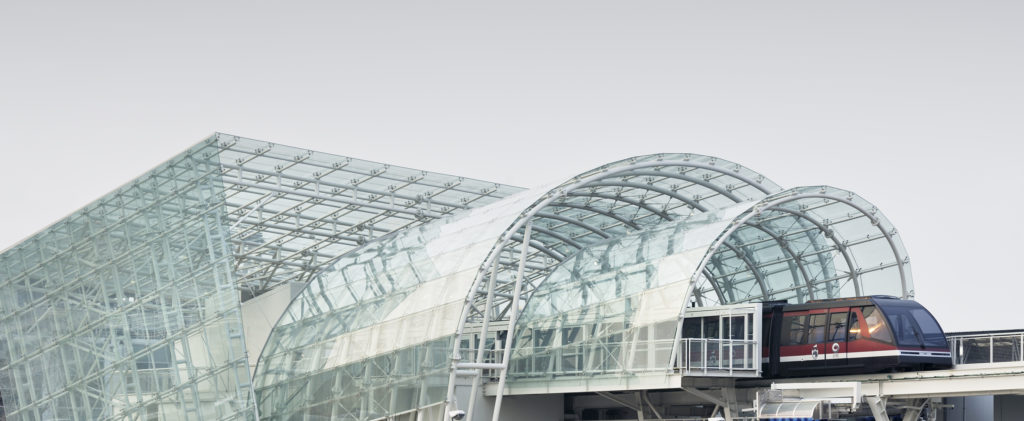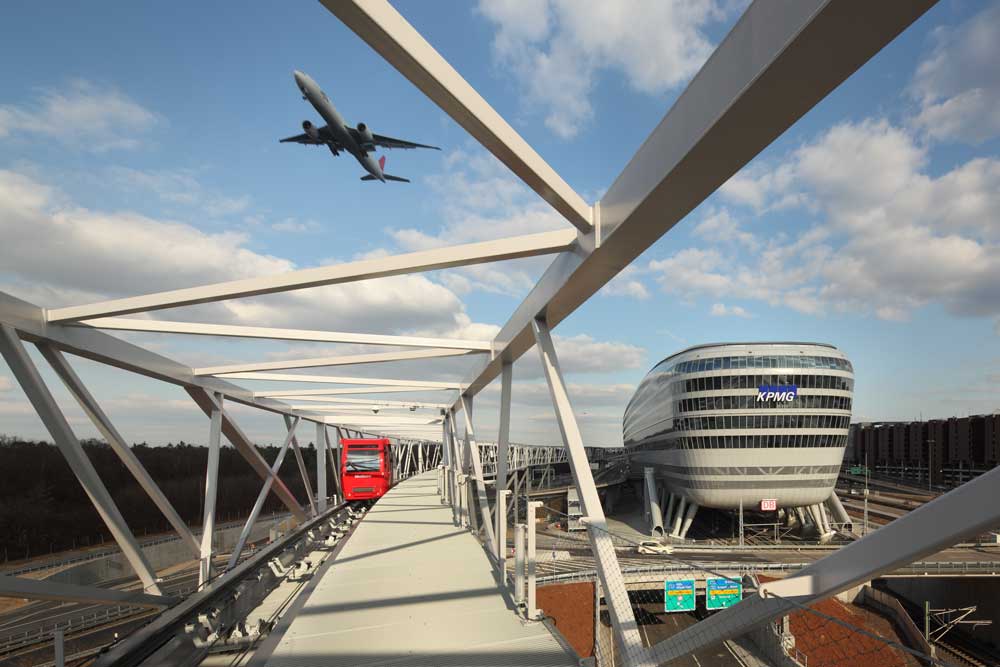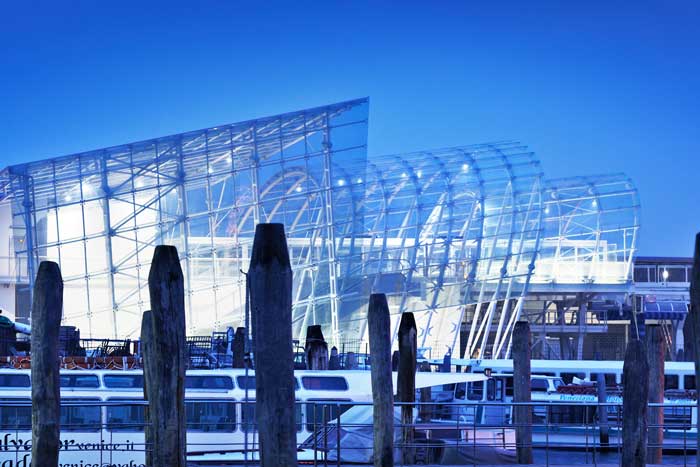
Cities, SI Urban 1/2021, SI Urban 2/2021
Interview: Construction in urban areas
SI Urban: What are the biggest difficulties with the implementation of mobility projects in urban areas?
Tanja Pichler: Probably the lack of space and the time pressure. In cities, almost every construction project is a burden on residents. Diversions or traffic jams because of construction sites probably represent the greatest challenge for urban life. Good planning is therefore paramount, in order to be able to achieve smooth processing as quickly as possible on the construction site.

The large, spacious steel and glass domes make the People Mover building in Venice appear spacious and open from both inside and outside. Photo: OskarDaRiz
And how do you resolve the problem of space?
At PICHLER PROJECTS, we specialise in the production of steel structures and façades. The special feature of steel construction is that it has a high level of prefabrication. The required components can therefore be produced in advance, in our factory. Consequently, many additional work stages on the construction site, which would take up space, do not apply. With good advance planning, we can deliver just-in-time and assemble immediately. That is very valuable in urban spaces.
So is steel the best material for urban construction?
Obviously it depends on the respective requirements, but steel construction has many advantages that can be used for projects in urban areas.
Other than the high level of prefabrication, what are the additional advantages?
Steel stands out in particular for the fact that it has an exceptionally high load-bearing capacity and it appears light and streamlined. As a result, steel structures generally look more transparent. Because it is possible to create structures with large spans, i.e. few supports, better use can be made of the limited space available in cities, such as by building over roads or junctions, which in turn creates additional space.
Furthermore, steel is perfect for construction at height or depth, which is becoming increasingly important in urban construction and with the growing shortage of construction land. In addition, steel is a sustainable material, as it is timeless and flexible when it comes to conversion. Moreover, it is very easy to dismantle and reassemble elsewhere. Plus: steel is a 100% recyclable material.

With cable cars too, the aim is to try to exploit an unused space. What would you say about this development?
We have often been involved with the construction of cable car projects in the past, including in urban areas, such as with the cable car in Venice. As visitors cannot travel into the city directly by car, there are large car parks outside the city centre there, and the “People Mover” connects to moorings for water taxis and cruise ships. The cable car has been in use for ten years now and works with no problem.
Here in Bozen, cable cars have also been in place for many years and are used for daily commuter traffic. I see no reason why this system should not also be employed successfully in other cities.
PICHLER PROJECTS implements many projects in the Alpine region but also has plenty of experience in the construction of urban projects. Are such projects very different from one another?
Every location obviously has its own characteristics, but the basic idea is very similar. With urban projects, there is always a lack of space and this has to be taken into account right from the site planning stage. This also means the workers on the construction site have to be very well trained, in order to cope with the confined space and use it efficiently together with all the companies that are involved with the construction.
It is therefore only for delivery of the components that we need to know which route and which time of day or night is best, to avoid placing an additional strain on traffic. An exceptional level of discipline is required here, throughout the entire construction project.
Steel buildings are easy to take down, but they are also good at simply expanding. So they can keep up with changing needs of the population

PICHLER PROJECTS generally stands out for particularly spectacular construction projects. What role does architecture play in urban areas?
A very central role, I would say. Although the look of a building is subjective, project acceptance is increased if more people feel that the shell of the building appeals to them. If a station building also has several functions, for example as a supermarket, cinema or public offices etc., then the building is no longer useful only for commuters but also for residents in the immediate vicinity. Once again, this increases the acceptance of such buildings.
The interview was conducted by Tamara Mair.







